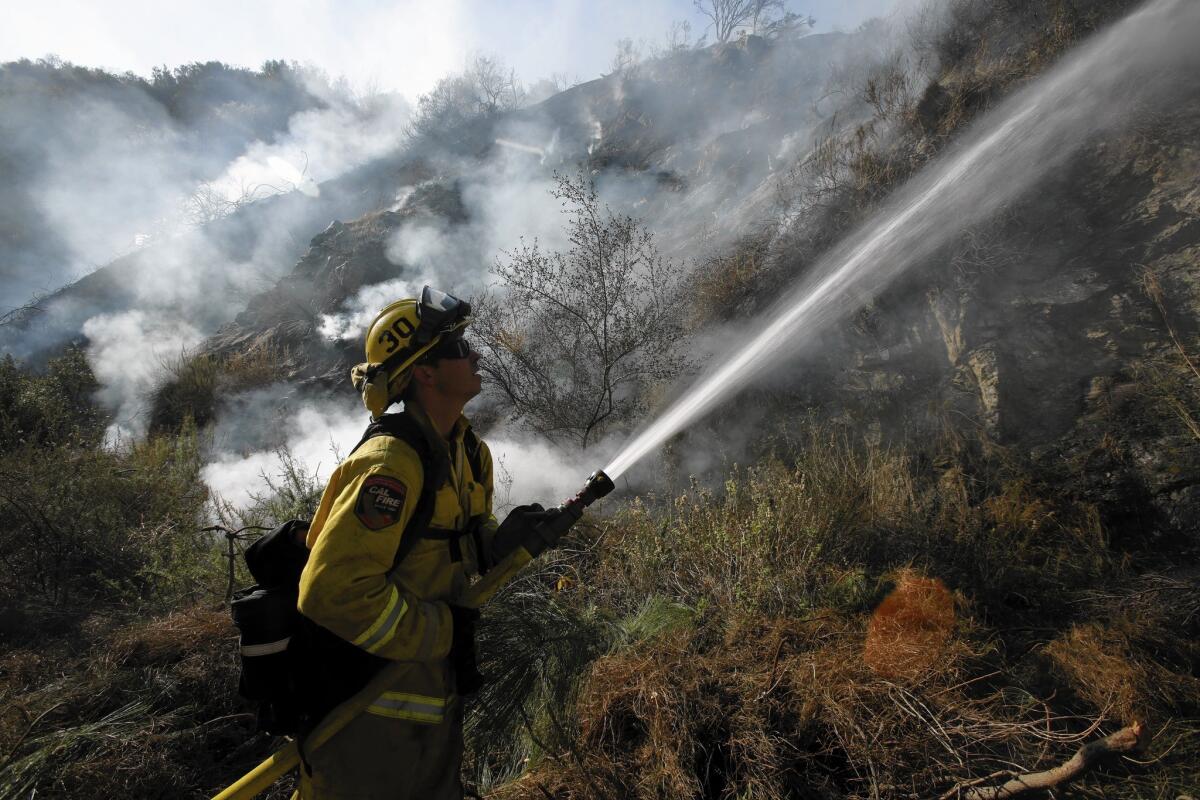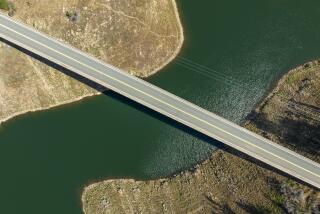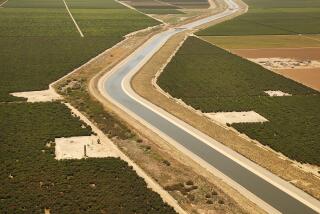California declares drought emergency

Gov. Jerry Brown officially declared a drought emergency in the state Friday, urging residents to cut water use by 20% and directing state agencies to take a range of steps to ease the effects of water shortages on agriculture, communities and fish and wildlife.
âWe ought to be ready for a long, continued, persistent effort to restrain our water use,â Brown said. He warned that Californians may be facing unprecedented dry conditions and need to become âmore efficient and more elegantâ in how they use natural resources.
âThis is not a partisan adversary. This is Mother Nature,â he said at a San Francisco news conference. âWe have to get on natureâs side and not abuse the resources that we have.â
Brownâs drought proclamation follows Californiaâs driest year on record and comes amid dropping reservoir levels and no sign of relief in the near future.
Some Northern California communities dependent on shrinking local supplies have already imposed rationing and others are asking residents to eliminate outdoor watering. Many Central Valley irrigation districts are warning growers to expect severe delivery cuts this spring and summer.
Politicians and agricultural interests who have urged Brown to declare an emergency welcomed the action as an important tool for coping with the unrelenting parched conditions.
âFarmers across California face wrenching decisions today, as well as in coming months,â Paul Wenger, president of the California Farm Bureau Federation, said in a statement. âWill they have enough water to plant crops, to water their livestock, and keep trees and vines alive?â
The detailed, 20-point drought declaration calls on California agencies to launch a statewide conservation campaign, expedite voluntary water transfers by rights holders to districts in need of supplies and hire additional seasonal firefighters this year to respond to elevated wildfire risk.
The proclamation allows state agencies to ease requirements for reservoir releases related to downstream water quality and directs them to monitor groundwater levels.
The declaration stops short of statewide mandatory rationing. âWeâre not aware of any governor doing [that],â said Nancy Vogel, public affairs director of the state Department of Water Resources. âThe governorâs authorities are broad, but we wouldnât want to speculate on the scope of that authority.â
The last statewide drought declaration was issued in 2009 by Gov. Arnold Schwarzenegger. Since 1987, there have been 13 emergency proclamations, most of them for a part of the state, and three executive orders related to drought, according to the water resources department.
âThe history of California water is the history of droughts,â said Jay Lund, director of the Center for Watershed Sciences at UC Davis. âDroughts motivate us to do stuff.â
Inevitably, they become political fodder.
This year is no different. Praise for Brownâs action Friday was laced with exhortations. Legislators from the Central Valley called for more water storage projects. Senate President Pro Tem Darrell Steinberg (D-Sacramento) said an $11-billion water bond should be reworked for the fall ballot and the state should tap the significant amount of unused money available from prior bonds.
Proponents of a $25-billion proposal to replumb the Sacramento-San Joaquin delta said the project would help avert future water shortages.
Some parts of the state are in a better position to deal with the drought than others. Thanks to long-term conservation efforts and the development of large regional storage facilities in Southern California, water managers do not expect to impose rationing in the Southland this year.
âLowering water demand in Southern California is a big reason why this region has sufficient supplies short term,â said Jeffrey Kightlinger, general manager of the Metropolitan Water District of Southern California. âBut this drought is a wake-up call to re-examine all of our water uses and redouble the commitment to conserve every possible drop.â
State water resources director Mark Cowin said other regions could take a cue from Southern California.
âWe need to carry out that same level of drought-proofing throughout the state,â Cowin said, adding that billions of dollars would be needed for infrastructure upgrades. âWe definitely need more financing to make that happen.â
Peter Gleick, an international water expert and president of the Pacific Institute, an Oakland-based think tank, said many of Brownâs directives were too open-ended to know exactly how they would play out until state agencies execute them.
âWhat we see here is the tension between protecting the environment and providing water for human demands,â he said. âThereâs a lot of yelling and screaming about how bad things are going to be, but we should be taking a calm, rational look.
âWe shouldnât be rushing into emergency responses that we may regret later,â he added.
Times staff writers Melanie Mason and Patrick McGreevy contributed to this report.







